This post may contain affiliate links. Please read our privacy policy.
When it comes to baking, sugar is one of the most important ingredients we use. But do you really know the difference between all of the types of sugar?
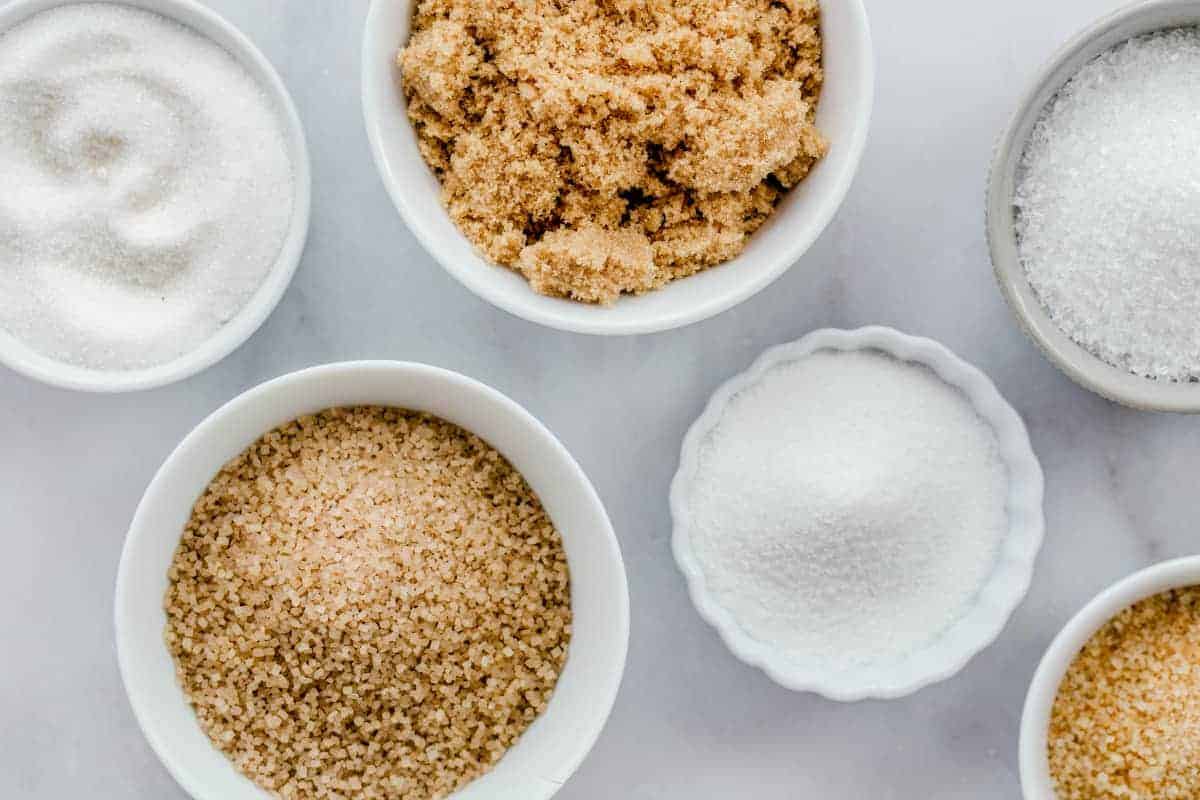
Sugar is an integral part of the baking that we do day to day.
Of course, the sweetness it provides to things like cookies and cakes is obvious. In breads and rolls, however, it feeds the yeast that makes for a beautiful rise.
For most people, the first thing that comes to mind when hearing the word sugar is white, granulated sugar. It’s the type that America uses most often for baking and sweetening our morning cup of coffee.
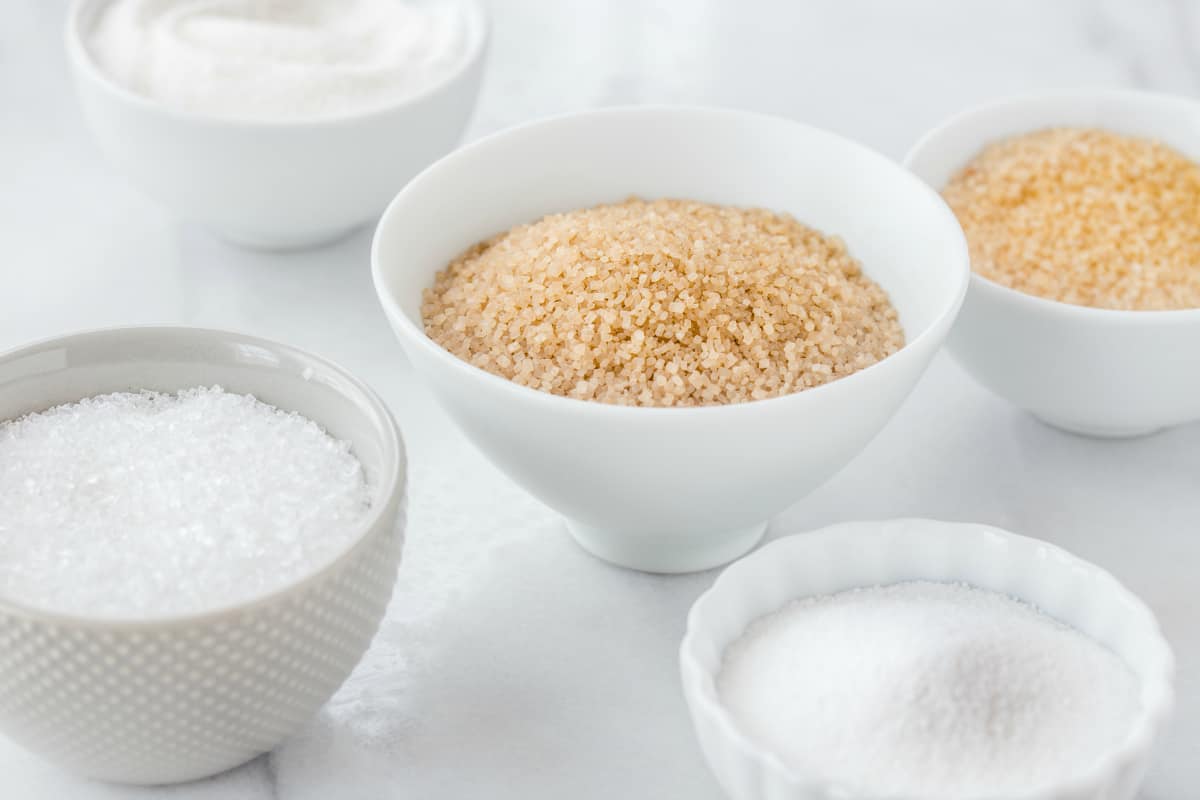
However, the more often you bake, the more different types of sugar you may come across.
In an effort to expand my own baking horizons, I thought we should discuss the types of sugar that are available for all of our baking needs. Are you ready to talk sugar?
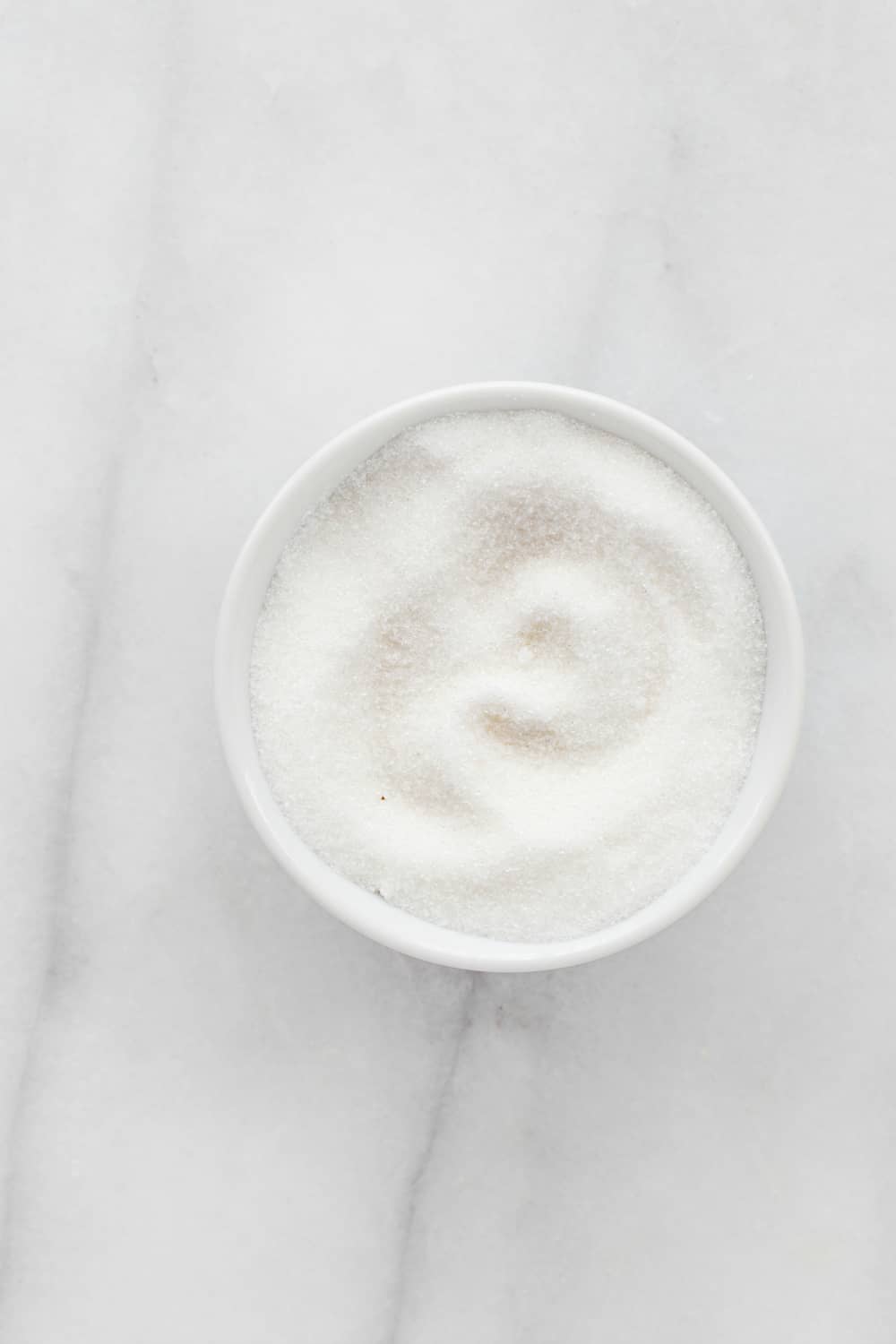
WHAT IS GRANULATED SUGAR?
Granulated sugar is also sometimes known as white sugar, or “regular” sugar.
Granulated sugar has had all of the naturally present molasses refined out of it. It is the sugar that is most commonly used in baking.
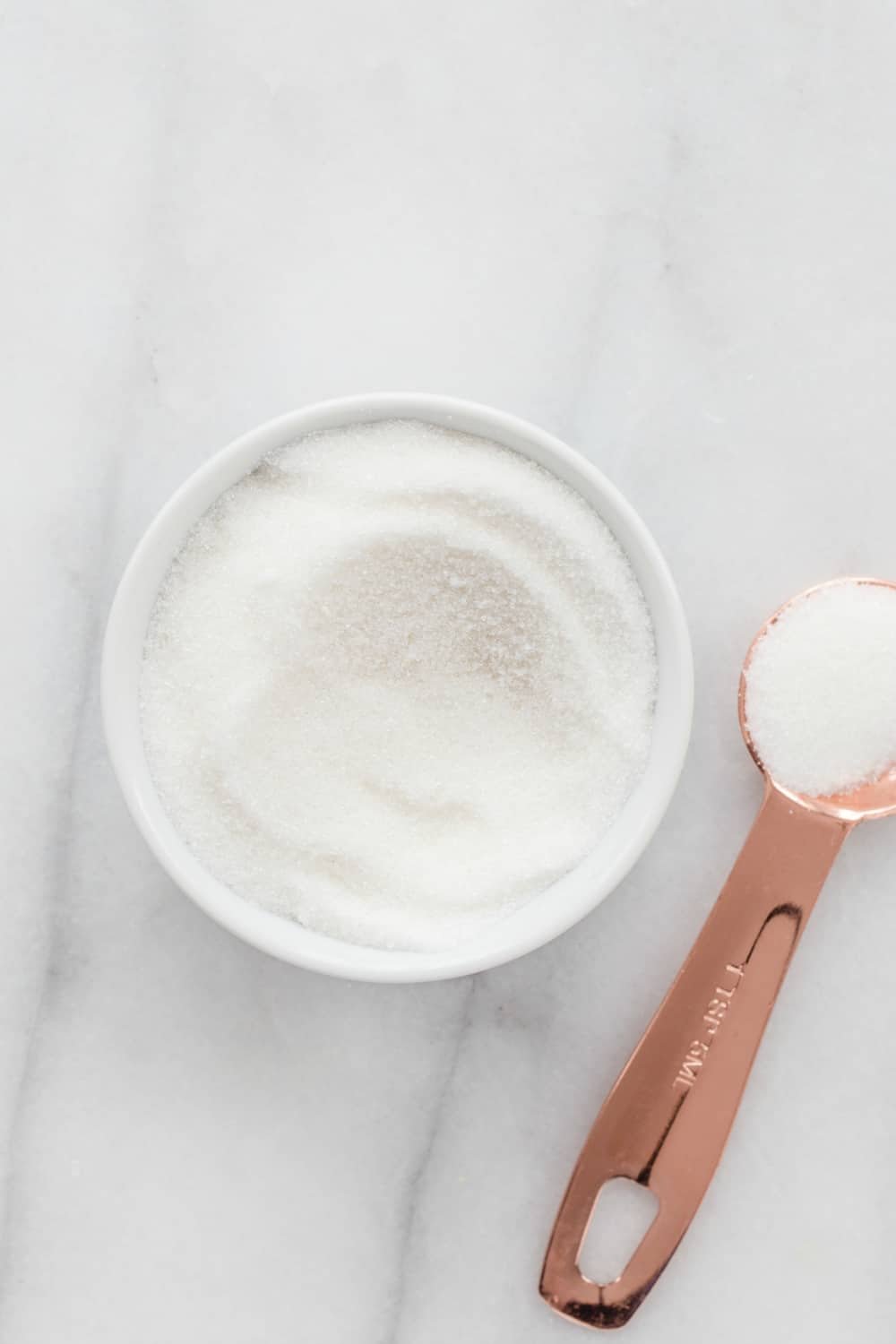
The fine crystals in granulated sugar don’t cake together, which makes it perfect for measuring, sprinkling onto food and dissolving into drinks.
Granulated sugar is what I use in most of my recipes, including The Best Chocolate Cake recipe.
IS CONFECTIONERS’ SUGAR THE SAME AS POWDERED SUGAR?
New bakers often get confused when they see the words “powdered sugar” and “confectioners’ sugar” used interchangeably. But this is because confectioners’ sugar and powdered sugar are the same thing!
Powdered or confectioners’ sugar is granulated sugar that has been finely ground and mixed with a small amount of cornstarch to prevent caking.
This is the sugar we commonly use for frostings, glazes, and that snowy covering on doughnuts that no doubt is all over your face and hands with the first bite.
Puppy Chow is a recipe that famously uses confectioners’ sugar for that beautiful white coating.
WHAT IS ICING SUGAR?
Icing sugar is simply another name for powdered sugar or confectioners’ sugar.
While it is a less common name here in the U.S., it makes sense since icing, powdered or confectioners’ sugar is so perfect for making icings, frostings and fillings, such as the filling in my Homemade Oatmeal Cream Pie recipe.
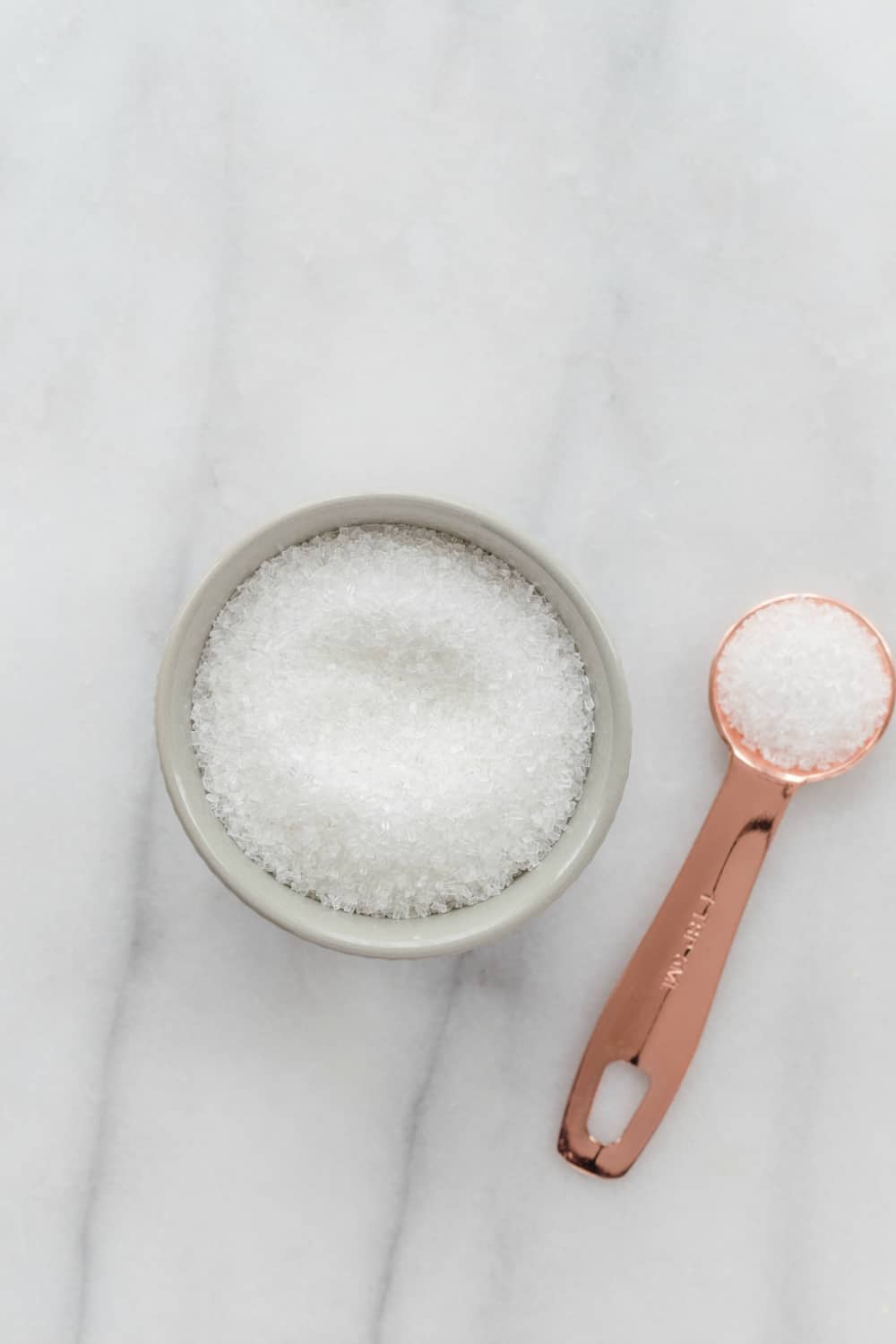
WHAT IS COARSE SUGAR?
As you can tell from its name, coarse sugar has much larger crystals than regular white sugar.
The larger size of the crystals (about the size of pretzel salt) makes the sugar stronger and more resistant to heat. This type of sugar also helps to give baked goods or candy a little texture.
Coarse sugar is used mainly for decorating and comes in a rainbow of colors. Because of this, it is sometimes called decorating sugar.
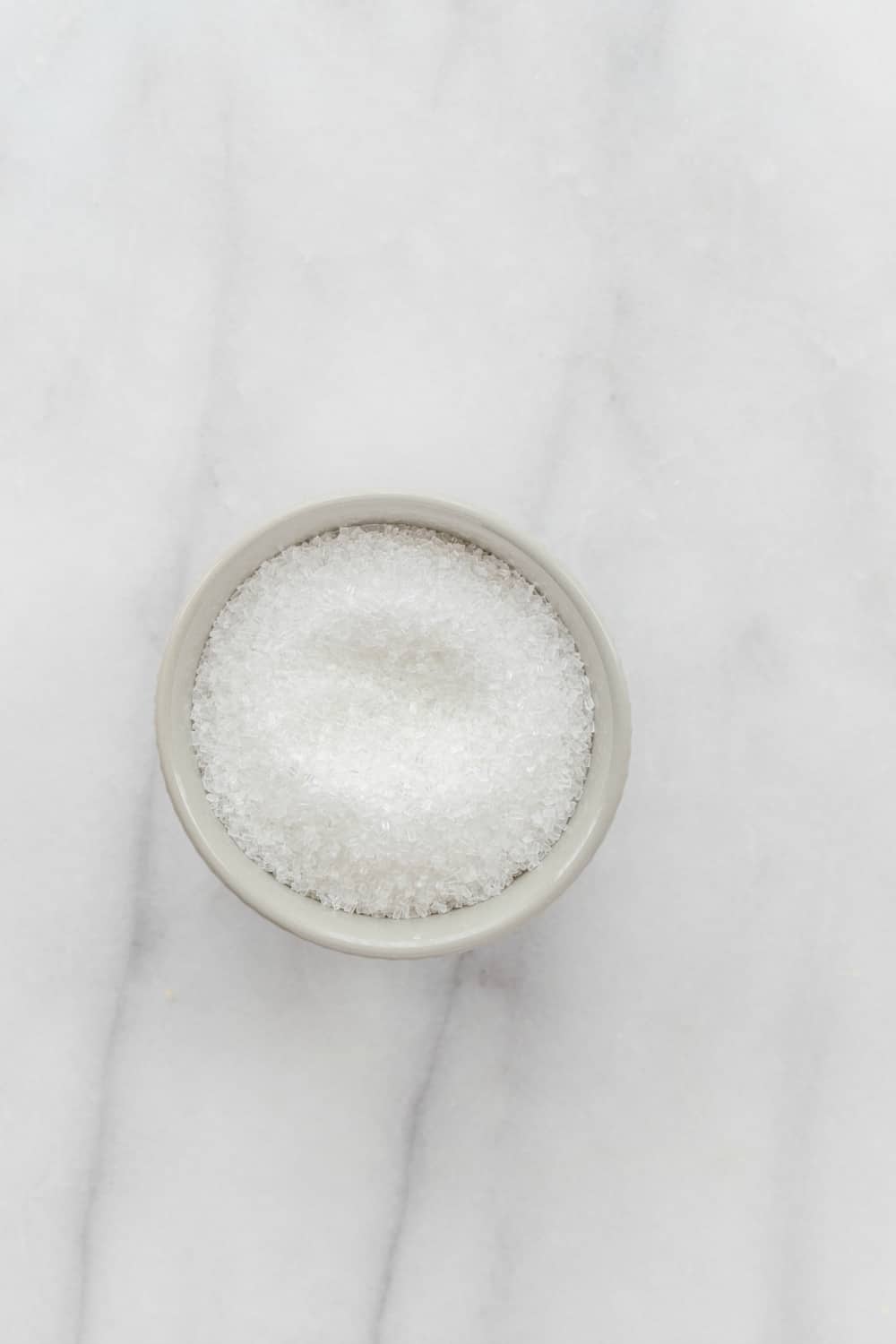
I like topping my Cherry Hand Pies recipe with coarse sugar for a little texture and added sweetness.
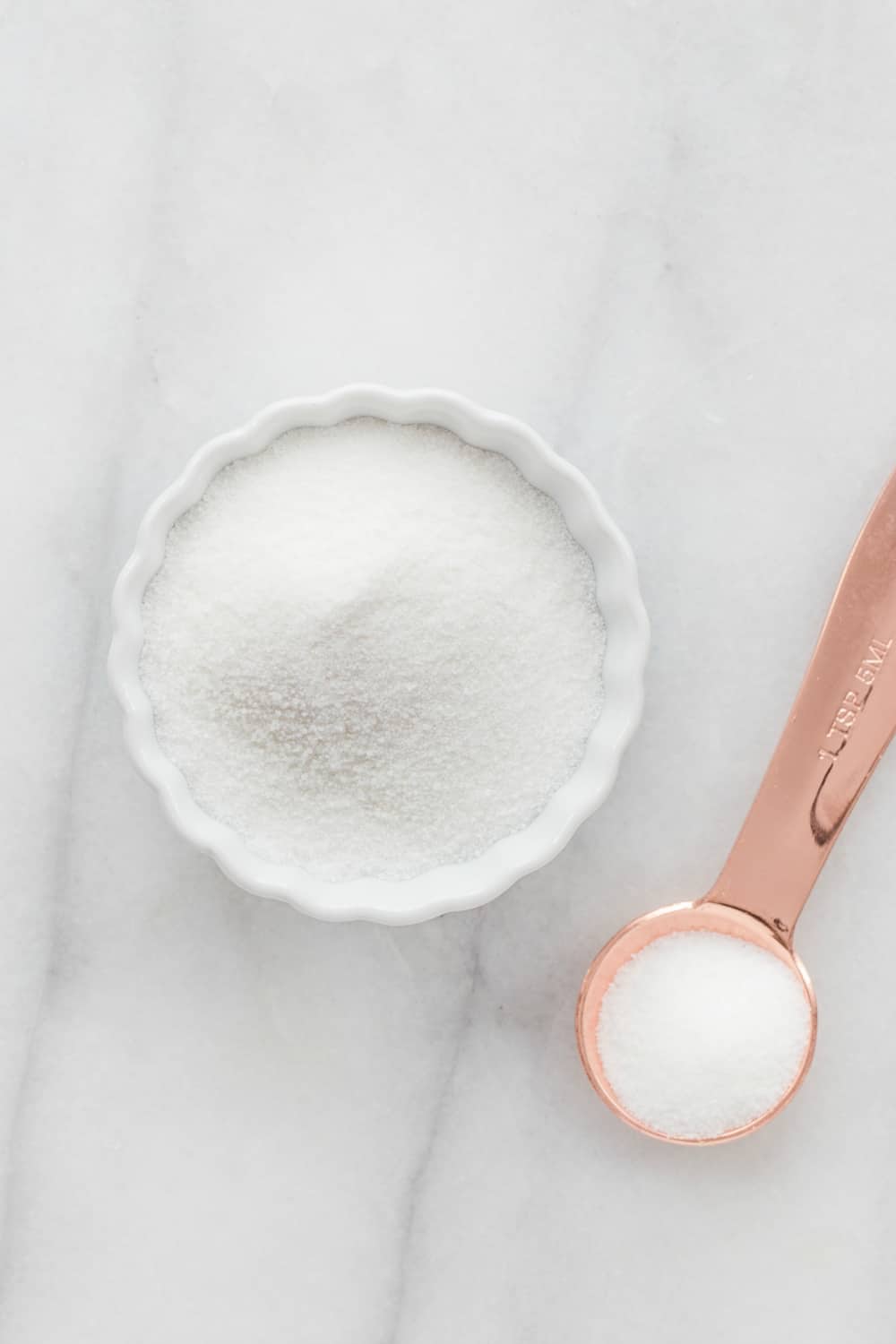
WHAT IS SANDING SUGAR?
Sanding sugar is another large-crystal sugar. It is between white granulated and coarse sugar in size.
Sanding sugar is another decorating sugar and comes in many colors. It also reflects light and gives of a sparkly shine. And, who doesn’t love their baked goods sparkly?
Sanding sugar is a great addition to any DIY Cookie Decorating Station.
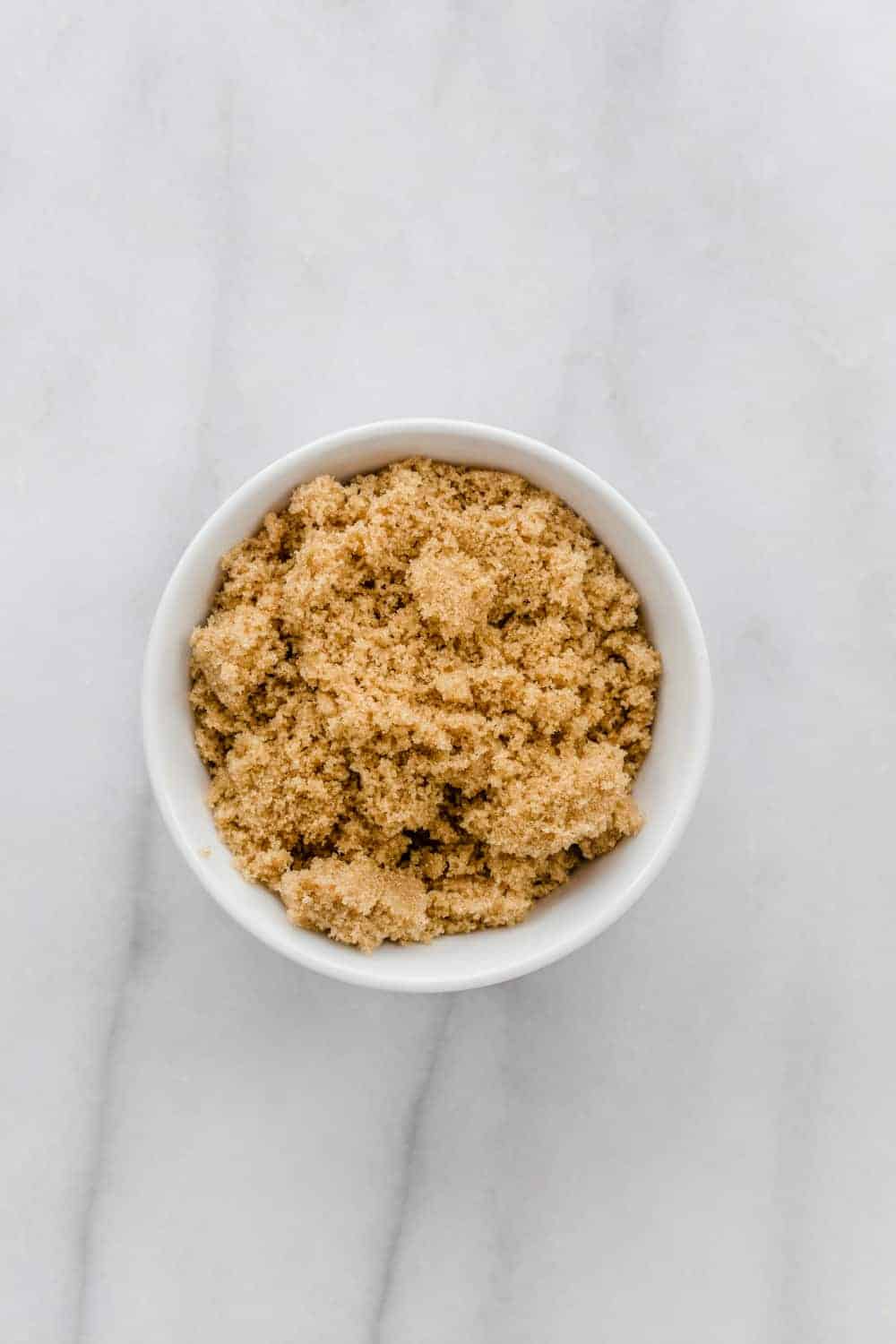
WHAT IS BROWN SUGAR?
Brown sugar is white sugar that has had cane molasses added to it.
Brown sugar can harden if left open to the air, so it is best stored in an airtight container. If your brown sugar has hardened, you can microwave it for a few seconds, or place a piece of bread in the bag and leave it for a day.
DIFFERENCE BETWEEN LIGHT AND DARK BROWN SUGAR
When you go to the store, you’ll see two types of brown sugar: light brown sugar and dark brown sugar.
These names – light or dark – refer to the amount of molasses that is present in the sugar.
Light brown sugar is what is used more often in baking, sauces and, glazes. I prefer light brown sugar in my favorite Peanut Butter Blossoms recipe.
Dark brown sugar, because of the rich molasses flavor, is used in richer foods, like gingerbread. Try dark brown sugar in Savory Sweet Life’s Chocolate Chip Cookies.
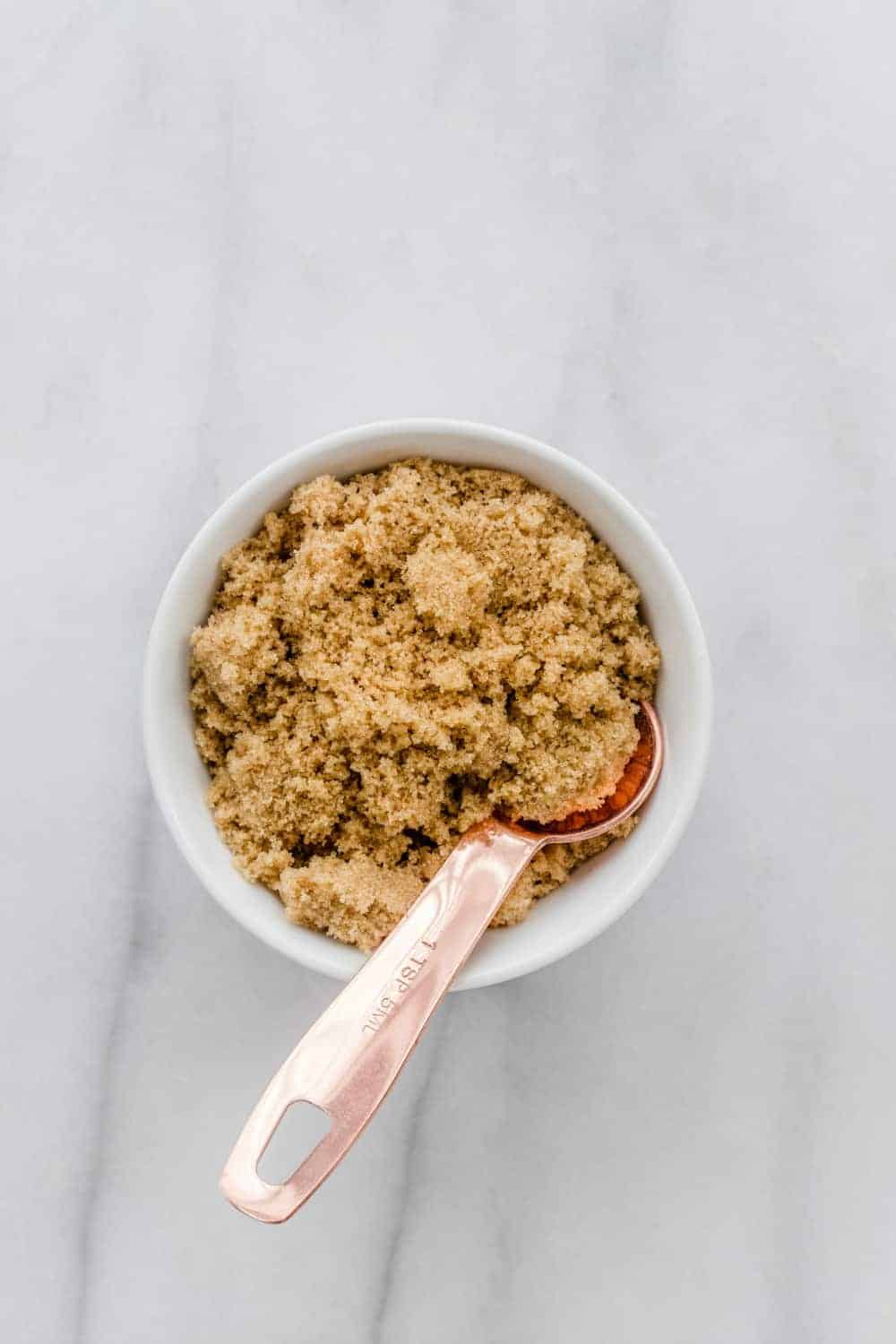
HOW TO MAKE BROWN SUGAR
If you’re out of brown sugar, it is easy to make at home in a pinch. All you need to know how to make brown sugar is:
1 pound granulated sugar
3 ounces molasses, by weight
Make sure everything is incorporated thoroughly in a food processor, and you can store it for up to a month!
WHAT IS SUPERFINE SUGAR?
Superfine sugar is also sometimes called ultrafine sugar, bar sugar or caster sugar.
These sugars have the smallest crystal size of white granulated sugar.
Superfine sugar is generally used in making delicate or smooth desserts such as mousse, meringues or puddings. It also is great for sweetening cold beverages because it doesn’t need heat to dissolve.
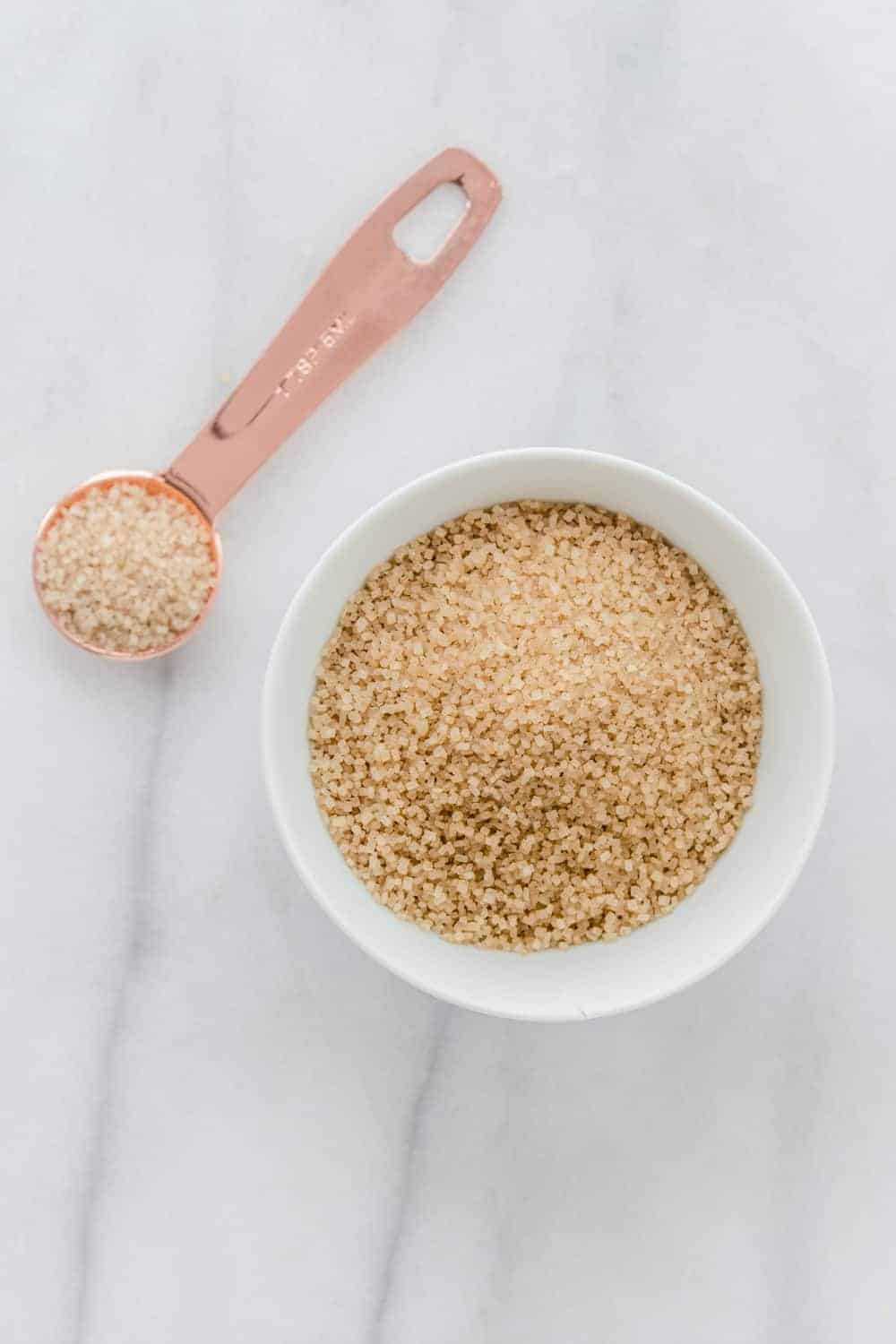
WHAT IS TURBINADO SUGAR?
Turbinado sugar is raw sugar that has only had the surface molasses washed off. It is light in color, usually has a large crystal, and is slightly lower in calories than white sugar due to the moisture content.
Turbinado sugar is mainly used in sweetening beverages, but can also be used in baking.
WHAT IS MUSCOVADO SUGAR?
Muscovado sugar, also known as Barbados sugar, is a type of British brown sugar.
Muscovado sugar is very dark brown in color and has more molasses than light or dark brown sugar. The sugar crystals are a little larger than regular brown sugar and the texture is stickier.
Muscovado sugar is used in sweets with rich flavors such as gingerbread, coffee cake, and fudge.
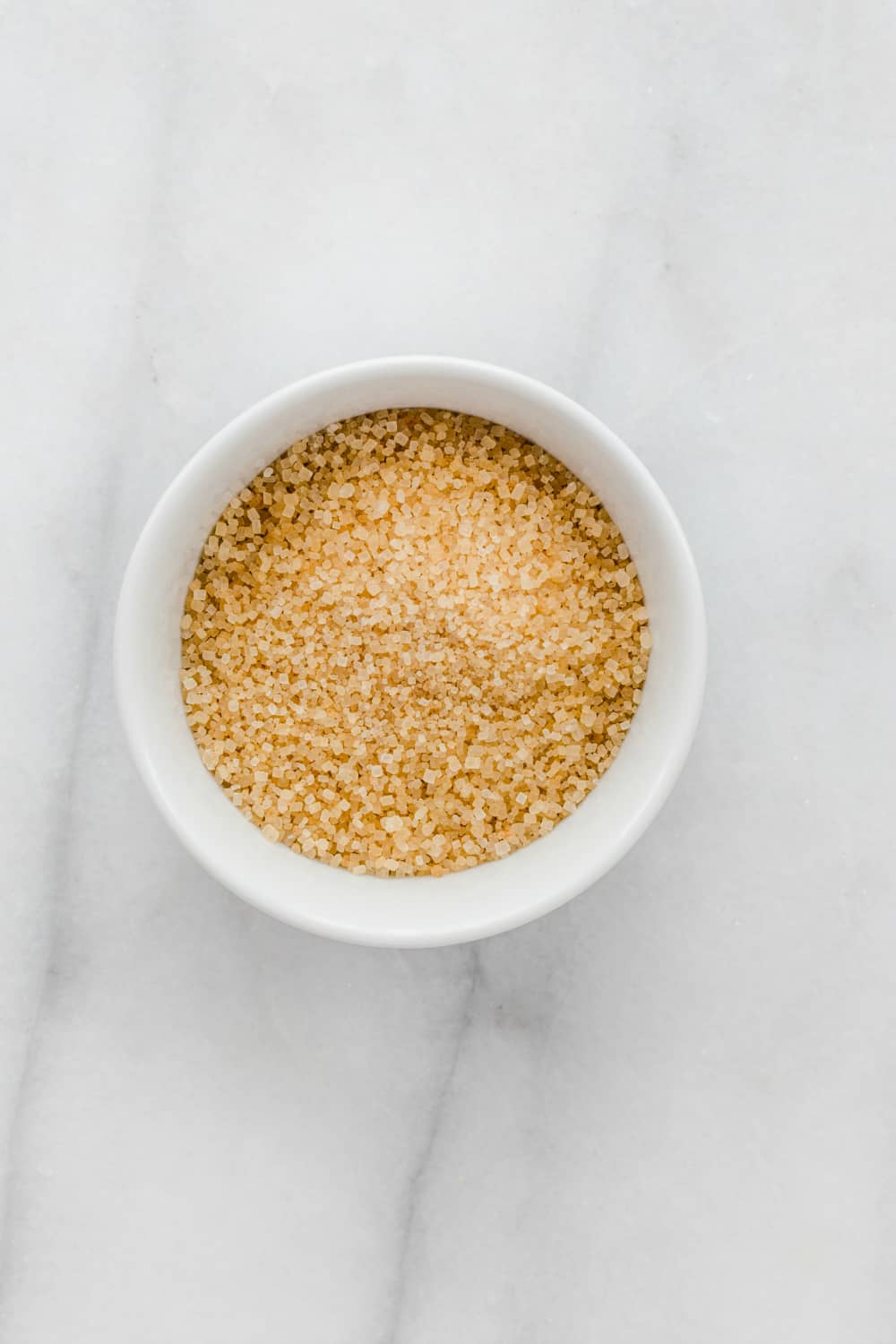
WHAT IS DEMERARA SUGAR?
Demerara sugar is another type of sugar that is very popular in England. In the U.S., the most comparable sugar is turbinado sugar – because they are both “raw”.
Demerara sugar is a large-grained, crunchy sugar that hasn’t had all of the molasses refined out.
Demerara sugar is great in tea, coffee, dissolved into hot cereals or sprinkled onto baked goods.
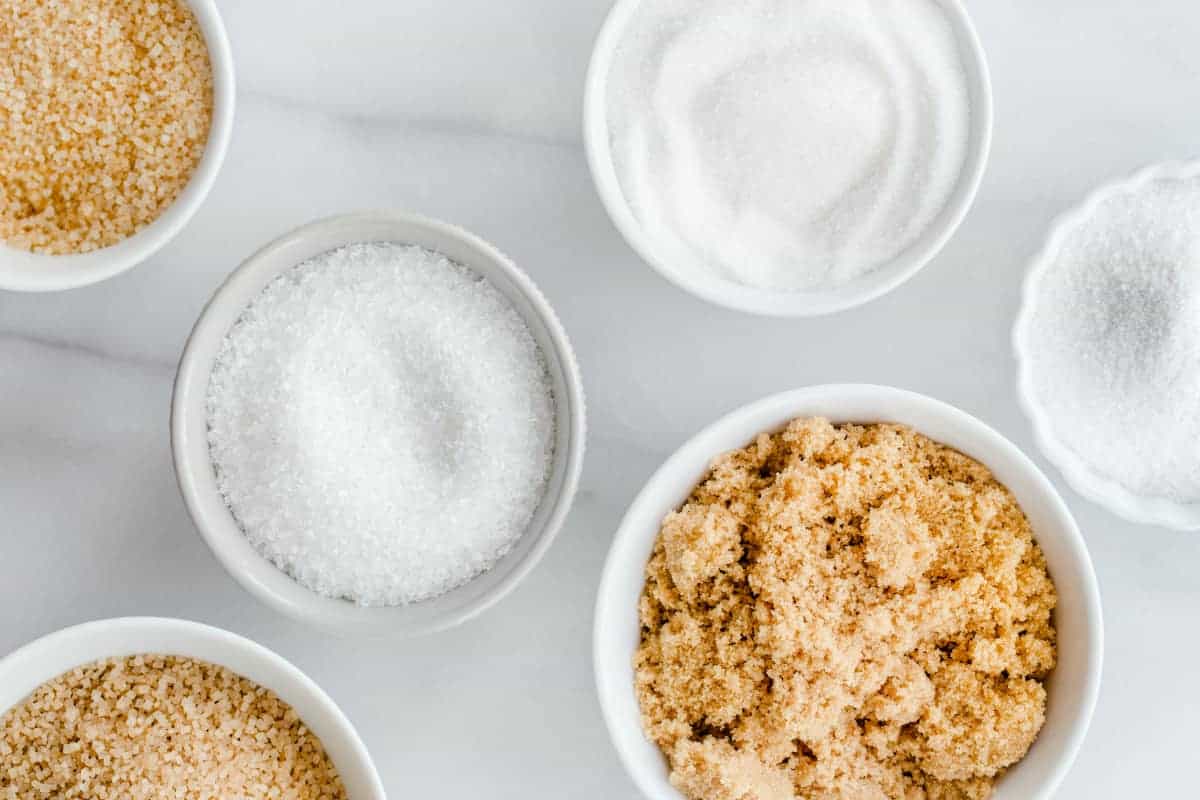
While you might feel like you just took a class on the types of sugar, who couldn’t use a little extra knowledge about such an important ingredient? Now it’s time to make sure you are stocked up and ready to bake!









This is so insightful, thanks Jamie
This was super helpful, thank you!
Thanks for giving insight to different sugars their various meanings and uses.
Thanks for stopping by!
Thank you for this!
I’ve been reading about colored sugar and decorating and half the people “out there” seem to think granulated sugar is great for everything. Now I have a handy reference for what kind if sugar I actually need in different applications!
Thanks so much for stopping by, Jamie! I appreciate you taking the time to comment. Happy Baking!
-Jamie
Thank you for the information about the different types of sugar. Glad I found this article. Happy Baking!
Thanks so much for stopping by, Karen! I appreciate you taking the time to comment. Happy Baking!
-Jamie
Hi
I have a question which has been baffling me for a long time. I usually keep coarse sugar at home and for baking I powder it in the grinder. It’s a fine powder but when I use it for frostings/icing, they turn out to be grainy. I tried sifting the sugar before incorporating but there was little difference. Any idea why this happens? I’m stumped.
Thanks!
Hello! Confectioner’s sugar has corn starch added to it. You also need to grind the sugar and corn starch together until it doesn’t feel at all grainy to the touch, or else it will still be grainy when you use it. Hope this helps –
Jamie
Thank you for the clarification of what is confectioner’s sugar. The name Demerara for Demerara Sugar has nothing to do with the type of sugar but is named after the county of Demerara in the country of Guyana where it is produced. Demerara sugar can be TURBINADO sugar or MUSCOVADO sugar. It is the one of the best and most nutritious sugars you will find. Many of the white sugar you get is these sugars from Guyana after being processed.
Hi there, thank you for the information! I hardly bake so these terms are confusing when I come across them. Question: are white sugar and brown sugar interchangeable? For example, I have a cheesecake recipe that I want to make but it calls for a cup of granulated sugar and I have brown sugar, will that work? Or should I get the granulated sugar to be safe? Thanks!
Hello! White (granulated) sugar and brown sugar are not interchangeable for the same recipe result. Depending on the recipe, you can sometimes use brown sugar in place of some or all of the white sugar, but the final recipe flavor and texture will be quite different. If you are new to baking, I recommend not experimenting with these substitutions just yet until you get a better feel for what the original recipes are meant to be like. Hope this helps!
Jamie
Hi! I am new at baking. I would like to try these tomorrow but am confused about the butter measurement for the cupcake. Do I melt the butter first and than measure or do I measure first and then melt ?
Hello! I am not sure which cupcake recipe you are referring to, but for butter it won’t make a difference if you measure before or after melting – the amount will be the same before and after. I usually measure the amount (example: 4 tablespoons) and then melt. Hope this helps!
Jamie
What about caster sugar?
Just starting to enjoy baking and soaking up as much information as I can. Glad I came to your blog and found this article!!
Thanks so much for stopping by, Ashley! I appreciate you taking the time to comment. Happy Baking!
-Jamie